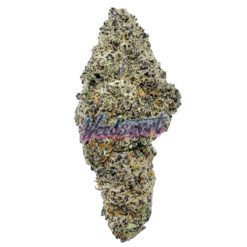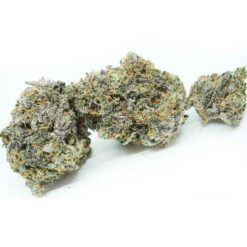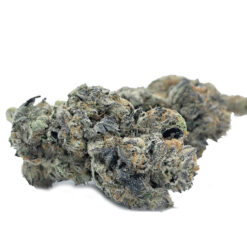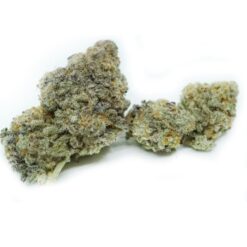Sativa
Buy Sativa Weed / Strains Online
Sativa strains are believed to come from the regions near the equator. Contrary to Indica strains, Sativas produce a more cerebral high that users describe as uplifting and stimulating. The plant is tall, with thin leaves and fluffy buds. This strains are great for performing daily tasks or for social activities; they are often considered party starters that can turn even the dullest evening into a fun and joyful time. The uplifting high coming from Sativas is also great for the wake and bake, not to mention its potential to stir creativity, which may prove invaluable for those who enjoy creative arts, writing or playing music. The medical benefits of sativa strains include treating Attention Deficit Disorder (ADD), fatigue, anxiety, depression, lack of motivation, and more.
What is Sativa?
These days, people often associate Sativa with its psychoactive effects on humans. Usually, when people hear Sativa, they imagine a cannabis species that provides a wonderful high. This high is usually characterized by increased energy. There’s also a feeling of upliftment, and a generally enjoyable cerebral experience. However, beyond these stereotypes, there is a bit more to the Cannabis Sativa species.
To put it concisely, Sativa is a subspecies of the cannabis plant. Physically, it is characterized by shorter stems and narrow leaves. It is considered most useful for its functions. It can be used as a source of hemp fibre and perhaps paper, depending on the anatomy of its stem.
Brief Taxonomic History of Cannabis Sativa
Sativa, as you know it today, was gotten from the Latin botanical adjective – sativum. The word translates to “cultivated.” The first time it was recorded to have been used as a term relating to cannabis in the English language was 1548. It was used by an English herbalist named Williams Turner in his book, “The Names of Herbes.” There, Williams referred to cultivated hemp as Cannabis Sativa.
More than 200 years later, a Swedish botanist named Carl Linnaeus had an erroneous belief. He thought that Cannabis Sativa was the only existing species of the Cannabis plant.
As such, he also referred to it by the same name that Williams Turner did in 1548. However, in the 1780s, Jean-Baptiste Lamarck, a French biologist, proved Carl Linnaeus’s wrong. He did so by identifying another subspecies of the Cannabis plant – Cannabis Indica. This action solidified our Indica/Sativa taxonomy.
Lamarck needed a proper way to identify Indica as a separate species from Sativa. So, he primarily focused on the physical differences that existed between both plants. Additionally, he noted the differences in the level of potency between the two. It is worth knowing that this was also the earliest time that any cannabis species’ effects would be directly related to its type.
Despite all this botanical and biological work, Sativa continued to evolve in taxonomy. The next shift happened in 1974. It is what shapes our current definitions of the Sativa and Indica species. Here, Richard Evans Schultes, an American biologist, used the term – Cannabis Indica. In his usage, it referred to Afghanistan cannabis plants.
This specific classification eventually turned out to be of such incredible importance. This is because it helped us to tie the various subspecies to a specific location. So, besides their varying levels of psychoactive qualities and differences in structure, Sativa also bears a difference in its growth location. Later on, Loran C. Anderson came along. He labelled Afghan cannabis plants as Cannabis Indica. Then, he labelled Indian cannabis plants as Cannabis Sativa.
Despite all these ideas and theory evolutions, there is still a major debate about these two. Many countries globally still believe that only Cannabis Sativa exists. To them, there are no other subspecies of the cannabis plant. Others hold the direct opposite opinion. Regardless, the marketplace identifies two varieties, Sativa and Indica.
Marijuana 101 | Sativa Weed Strains
In the world of cannabis, a marijuana plant can be from one of the three main subspecies: sativa, indica, or ruderalis. Hybrid strains are created by combining both indica and sativa. What makes sativa unique is that it induces a more stimulating, uplifting and cerebral high, unlike indica strains that are known for their body buzz and couch lock characteristics.
Sativa plants are THC dominant and they tend to grow taller than indica plants. This strain has larger, cone-shaped buds that are less dense compared to what their shorter cousins yield. Contrary to cannabis indica, sativa plants are taller, take longer to flower, and prefer to grow in a warm, tropical climate with a humid atmosphere.
THC heavy strains are commonly chosen by users who are looking for a potent, euphoric effect. With that in mind, if you’re looking for the classic weed high, you’re in the right place, but if clear-headed pain relief is what you’re looking for, then we encourage you to check out our wide range of indica strains that have both THC and CBD.
Effects of Sativa Weed
Sativa is generally used during the day because of their energetic and functional high that doesn’t hinder your ability to perform complex tasks. Many sativa users often report heightened productivity while performing creative tasks such as playing music, painting and writing.
Some of the more common benefits associated with this cannabis strain include uplifted mood, energy, focus, and overall peace.
However, predicting the exact effects of a certain strain just by its indica/sativa classification often turns out to be inaccurate; different sativa strains can provide different effects; we recommend consulting a budtender and trying different strains till you find the right one for you.
Medical Uses
While indica still remains the top choice for medical uses of marijuana, sativa comes close and provides equally good benefits. As previously mentioned sativa weed induces uplifting and stimulating effects, making it a favorite for medical marijuana users to use throughout the day.
Sometimes indica weed can make you feel lazy and too overly relaxed and sometimes even antisocial while out in public. With sativa weed, you don’t have to worry about all that since it tends to make you more alert and sociable.
Negative Effects
The most noteworthy side effect of potent cannabis sativa is that taking too much can make you feel dizzy, disoriented, and paranoid. We recommend preparing your dose only after checking the THC level of the strain you’re using. Sativa weed usually contains a higher amount of THC than CBD — that’s the reason behind most of its negative effects.
Cottonmouth and dry and red eyes are almost certain if you take too much. Just keep some refreshments close at hand and you will be fine. Also, try not to smoke too much at once; take it easy, gauge how high you feel before consuming more. Same thing applies if you’re into edibles.
Different Types of Sativa Weed
There are not many full 100% sativa strains in Canada, however, there are tons of sativa dominant hybrids. Many people classify anything 75% sativa and over to be a sativa strain. This is just a general rule and everyone is different. Most 100% strains are land-race strains.
It is believed that some marijuana strains have managed to retain 100% of their sativa genetics, making them invaluable. These include:
- Durban Poison Strain
- Red Congolese Strain
Some of the most popular and commonly purchased sativa dominant cannabis strains in Canada include:
- King Tut
- Trainwreck
How to Choose the Best Strain for you
Evidently, there are a lot of options to choose from if you want to try out Sativa strains for the first time. However, we must mention the importance of responsibility as a cannabis smoker. We’ve already clarified that the Sativa subspecies can have a few negative side effects on you under certain conditions.
Indeed, some of these effects might be considered trivial or inconsequential. Regardless, they’re still unpleasant, and you should avoid them if you can. The best way to do so is by taking proper care to choose the best strain of cannabis for you. Here are a few factors to consider if you want to do that:
1. Purpose
People take Sativa weed for many different reasons. For some, they’ve had a creative block for far too long, and they absolutely need to put something down. For other people, stress from work and life generally has been a major problem. Finding a way to relax is imperative, and a two-hour nap just wouldn’t cut it. For another group of people, coming out of their shells to have fun every now and then is a bit of a challenge.
Cannabis can help with virtually all these challenges. However, there are different strains created to assist in different ways. Before making a purchase, decide what you want to use your cannabis for. That way, you wouldn’t be spending on something that wouldn’t serve you beyond a few minutes of laughs.
- Tolerance
All humans generally share similar physiology. However, we still differ in many ways. These include such nuances as eye colour, hair length, lip shape, and yes, Sativa tolerance. What your friend might be able to take without batting an eyelid might be very uncomfortable for you. Of course, this goes both ways.
So, as you set out on your journey to get some of that good kush, keep your tolerance level in mind. If you do not know your tolerance level yet, we’ll strongly advise that you start with small doses. This is especially so if being a beginner hasn’t helped you discover your tolerance level. As soon as you’ve had your first hit/drag, take your time to see how you feel first. If you’re starting to feel uncomfortable or a little more woozy than you should, perhaps it’s time to call it a day.
- Medical history
Cannabis is a natural plant. It grows in different parts of the world under different conditions. Being natural, like many others of its kind, the plant isn’t poised to cause you a significant amount of harm. This is especially so if you consume it responsibly.
Nevertheless, it could still interact with your preexisting medical conditions. If this happens, it will likely impact you negatively. For example, if you already have some form of lung disease, you might want to stay off pot. This is important, no matter the strain. Also, if you’re on medication that marijuana affects, you might want to stop pot.
The best course of action for this factor is to see your medical practitioner. They’ll be in the best position to explain your potential health risks to you.
Best Ways to Consume
The old fashioned way, in a joint! But if joints are not for you, then maybe a bong or a pipe would be more convenient. If you own a dry herb vaporizer, you can vape your weed with it. If smoking is not for you, then you can eat it as well after extracting the THC from the buds.
For people who don’t mind smoking, there’s no denying that joints are the best way to consume weed; they’re easy to roll, dispose and you don’t have to carry around any extra paraphernalia apart from rolling papers and maybe a few roaches if that’s your style. Pipes and bongs are a close second best way to smoke weed.
For non-smokers though, using a dry herb vaporizer or extracting the THC into edibles is the best way to consume weed. That way you still get the buzz and you don’t have to harm your lungs to do so.
Alternatives
Understandably, sativa isn’t for everyone. Some people like the overly relaxing, euphoric and body numbing properties of indica weed. Indica is also better suited for relieving lingering aches and pains. However, if you want something to relax your muscles but not put you to sleep, then hybrid strains are your best option.
If you want something stronger, marijuana concentrates might be what you need. Some of the most popular weed concentrates include: budder, shatter, live resin, cannabis oil, hash, and distillate. All of these cannabis products are much more potent and should be used carefully.
There are many different methods and techniques to consume concentrates; we recommend doing your research and getting in touch with experienced cannabis users (like us) to get the best results.
People new to cannabis should probably stick with flowers first before moving up into the world of marijuana concentrates.
Weed edibles are another option for consuming cannabis. It is the perfect method for people who don’t wish to smoke marijuana flower. Weed edibles should be taken in small doses to begin since they are very potent and affect the body differently.
Best Place to Buy Sativa Weed in Canada?
We’re among the absolute best online weed dispensaries in Canada. Our cannabis is sourced from master growers with many years of experience — they care about their plants and make sure that the product quality stays consistent and top notch.
Checkout our offers on premium flowers and bulk orders! We’re constantly on the lookout for new and creative ways to provide our customers the highest savings on top quality cannabis brands in Canada. It’s time to shop smart with Weed Smart!
References:
- Dennis P.Cantwellm.D. Attention Deficit Disorder: A Review Of The Past 10 Years. Accessed January 12th, 2021 at https://www.sciencedirect.com/science/article/abs/pii/S0890856709624916..
- David Gloss. An Overview of Products and Bias in Research. Accessed January 12th, 2021 at https://link.springer.com/article/10.1007/s13311-015-0370-x.
- H.M.G.van der Werfabc, J.E.Harsveld van der Veen, A.T.M.Boumab, M.ten Catea. Quality of hemp (Cannabis Sativa L.) stems as a raw material for paper. Accessed January 12th, 2021 at https://www.sciencedirect.com/science/article/abs/pii/0926669094900396.
- Machado Bergamaschi, Mateus; Helena Costa Queiroz, Regina; Waldo Zuardi, Antonio; Alexandre S. Crippa, Jose. Safety and Side Effects of Cannabidiol, a Cannabis Sativa Constituent. . Accessed January 12th, 2021 at https://www.ingentaconnect.com/content/ben/cds/2011/00000006/00000004/art00005.
- Understanding reasons for drug use amongst young people: a functional perspective. Annabel Boys, John Marsden, John Stran. Accessed at January 12th, 2021 at https://academic.oup.com/her/article/16/4/457/558793?login=true.
- Comprehensive Human Physiology. Accessed January 12th, 2021 at https://europepmc.org/backend/ptpmcrender.fcgi?accid=PMC2230079&blobtype=pdf.
- Evolution and Classification of Cannabis Sativa (Marijuana, Hemp) in Relation to Human Utilization: The Botanical review. Accessed January 14th, 2921 at https://www.researchgate.net/publication/282730053_Evolution_and_Classification_of_Cannabis_Sativa_Marijuana_Hemp_in_Relation_to_Human_Utilization DOI:https://www.researchgate.net/deref/http%3A%2F%2Fdx.doi.org%2F10.1007%2Fs12229-015-9157-3
- Cannabis Systematics at the Levels of Family, Genus, and Species: John M. McPartland. Accessed January 14th 2021 at https://www.liebertpub.com/doi/full/10.1089/can.2018.0039




























